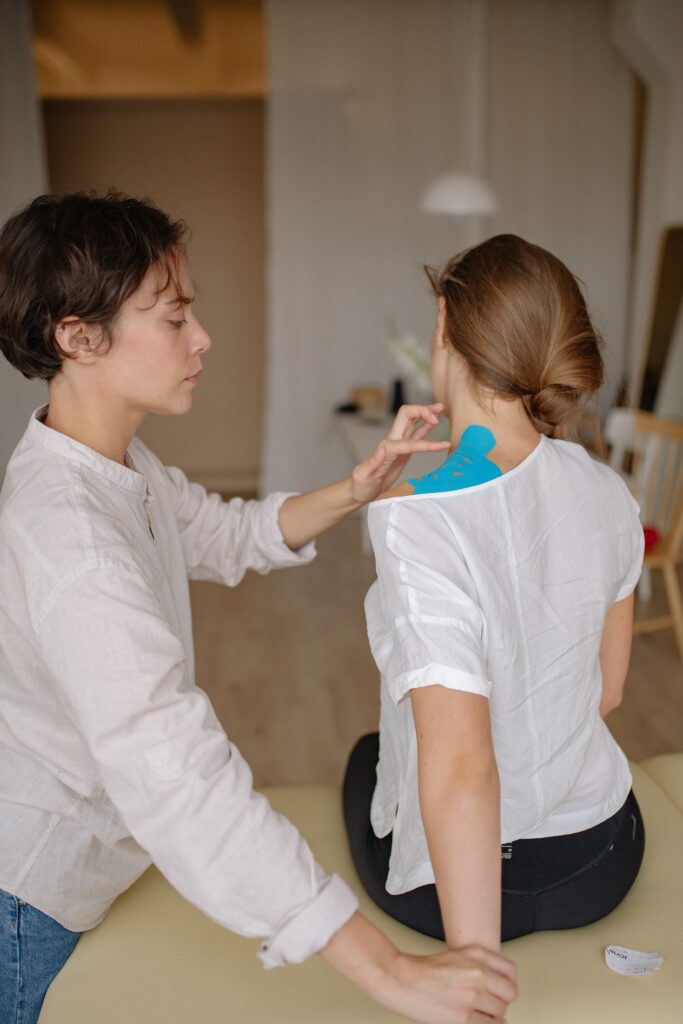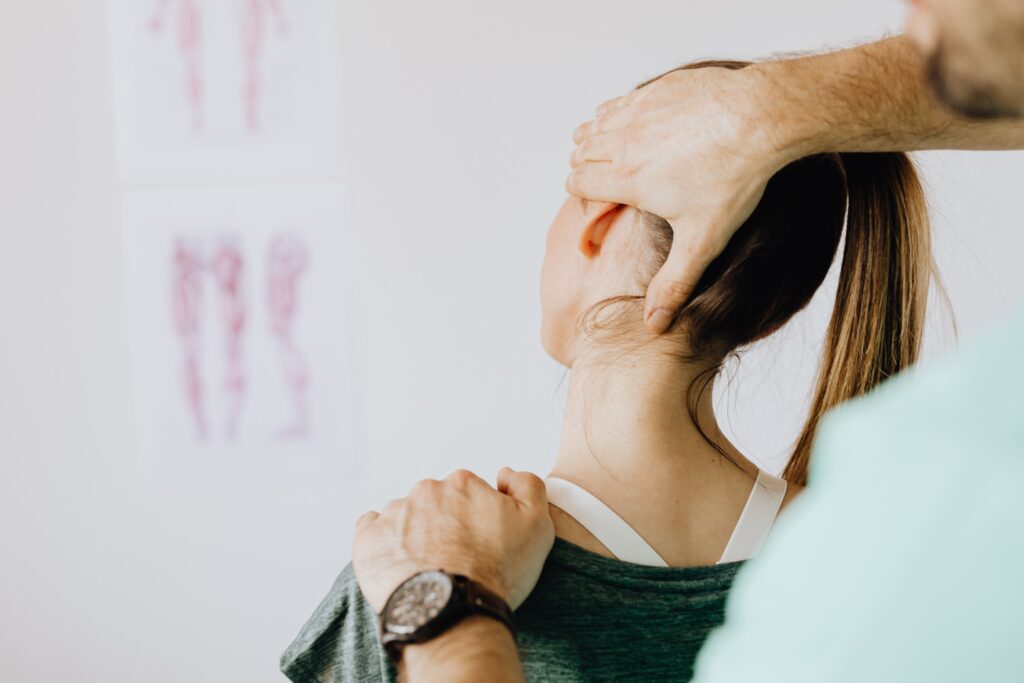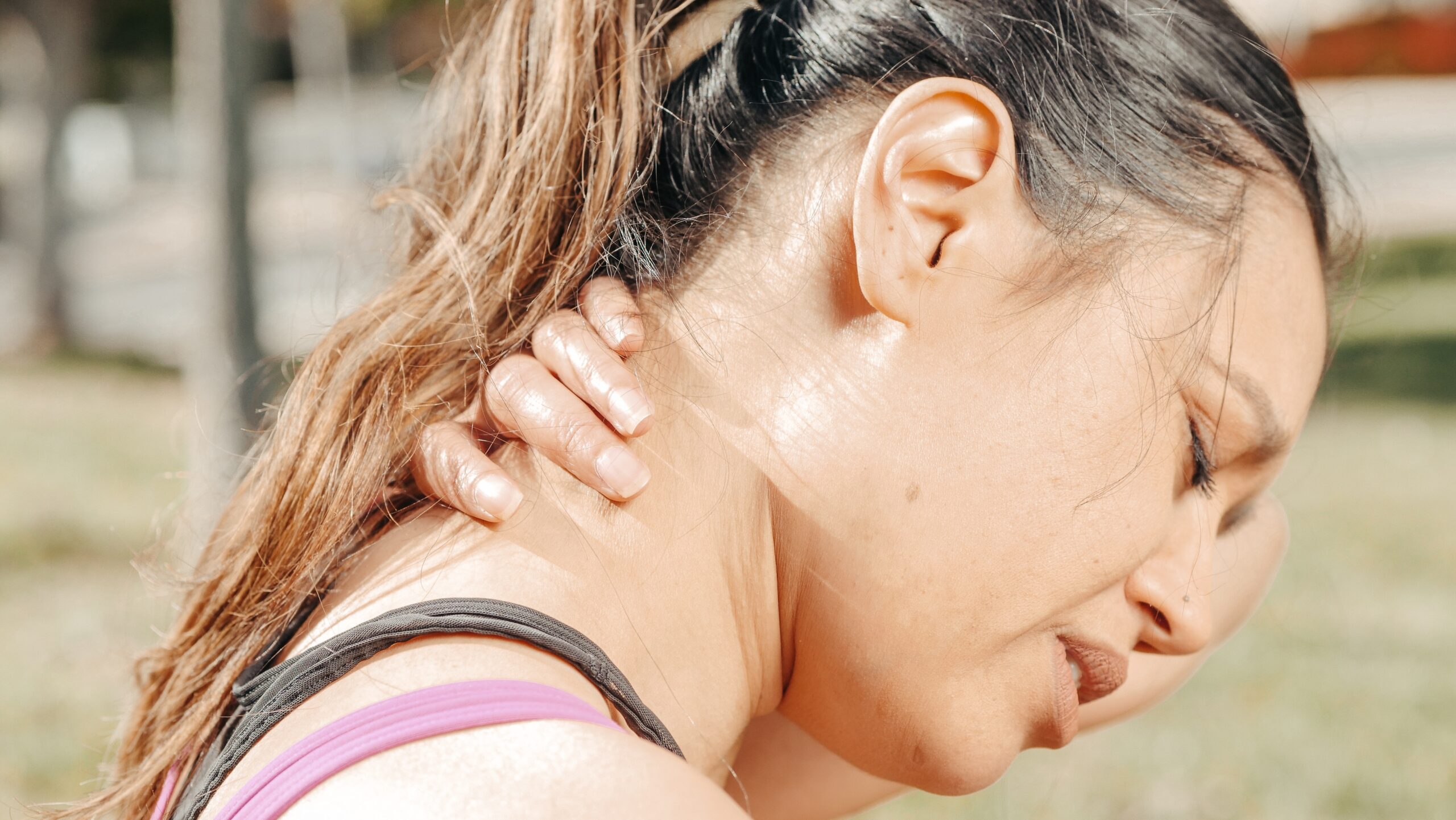Transform Your Life: 4 Powerful Strategies to Overcome Upper Cross Syndrome and Achieve a Pain-Free Posture
Upper Cross Syndrome also referred to as Student Syndrome is a common musculoskeletal problem that can be treated with a few easy exercises.
What is Upper Cross Syndrome?
Upper Cross Syndrome is a common postural condition that affects many individuals, particularly those who spend long hours sitting or working at a desk. It is characterized by a specific pattern of muscle imbalances and tightness in the upper body, which can lead to various symptoms and discomfort.
In Upper Cross Syndrome, the muscles in the front of the body become tight and overactive, while the muscles in the back become weak and underactive. This imbalance creates a crossed pattern of tension and weakness, hence the name “Upper Cross Syndrome.”
The primary muscles involved in Upper Cross Syndrome include the upper trapezius, levator scapulae, pectoralis major, and pectoralis minor in the front, and the deep neck flexors and lower trapezius in the back. The tightness in the front muscles pulls the shoulders forward and causes rounding of the upper back, while the weakness in the back muscles leads to postural instability and strain on the neck and shoulders.

What are the Symptoms of Upper Cross Syndrome?
Upper Cross Syndrome is characterized by a specific set of symptoms that result from the muscle imbalances which can create the distinctive upper cross syndrome posture. The following are common symptoms experienced by individuals with Upper Cross Syndrome:
- Forward head posture: The head is positioned in front of the shoulders rather than aligned over them, leading to a protruded chin and a rounded upper back.
- Rounded shoulders: The shoulders are pulled forward and may appear rounded or hunched.
- Upper back and neck pain: Chronic pain or discomfort in the upper back and neck region is a common symptom. This pain can be localized or may radiate to other areas, such as the shoulders, arms, or even the head.
- Headaches: Tension headaches are frequently reported by individuals with Upper Cross Syndrome due to the strain on the neck and shoulder muscles.
- Restricted range of motion: Tightness in the chest muscles (pectoralis major and minor) and neck muscles (upper trapezius, levator scapulae) can limit the ability to fully rotate or extend the neck and shoulders.
- Muscle tightness and weakness: The muscles in the front of the body (chest, neck) tend to be tight and overactive, while the muscles in the back (deep neck flexors, lower trapezius) become weak and underactive.
- Numbness and tingling: In some cases, nerve impingements can occur due to the postural changes and muscle imbalances associated with Upper Cross Syndrome, leading to sensations of numbness, tingling, or even weakness in the arms or hands
What is the Treatment

The rehabilitation approach for Upper Cross Syndrome typically involves a combination of stretching exercises, strengthening exercises, postural correction, and ergonomic modifications. Here is a detailed rehabilitation program for Upper Cross Syndrome:
- Upper Cross Syndrome Stretches:
- Chest stretches: Stand in a doorway with your arms out to the sides and bent at a 90-degree angle. Step forward with one foot to stretch the chest muscles. Hold for 20-30 seconds on each side. Repeat
- Neck stretches: Tilt your head to the side, bringing your ear towards your shoulder, and hold for 20-30 seconds on each side.
- Upper Cross Syndrome Exercises: An essential component of addressing the symptoms of Upper Cross Syndrome. While the following exercises are commonly recommended, it is important to consult with a healthcare professional such as a physiotherapist or chiropractor for personalized recommendations. Keep in mind that the suggested hold times, repetitions, and sets serve as general guidelines and may need to be adjusted based on individual needs. It is crucial to listen to your body, challenging yourself without overexertion. The exercises should be performed until you feel a level of difficulty but should not cause pain.
- Scapular retractions: Squeeze your shoulder blades together, as if trying to hold a pencil between them. Hold for 5-10 seconds and repeat for several repetitions.
- Chin tucks: Gently tuck your chin inwards while maintaining a neutral head position. Hold for a few seconds and repeat for several repetitions.
- Lower trapezius exercises: Lie on your stomach with your arms at your sides. Lift your chest off the ground while squeezing your shoulder blades together. Hold for a few seconds and repeat for several repetitions.
- Upper Cross Syndrome Posture Corrections:
- Focus on maintaining proper posture throughout the day, with your head aligned over your shoulders and your shoulders pulled back and down.
- Avoid prolonged sitting or standing in the same position. Take frequent breaks to stretch, walk, or change positions.
- You can learn more about posture in my article HERE
- Upper Cross Syndrome Ergonomic Modifications:
- Adjust your workstation setup to promote good posture. Ensure that your chair, desk, and computer monitor are positioned at the appropriate heights.
- Use ergonomic tools such as an adjustable chair, lumbar support, and a monitor stand to maintain proper alignment and reduce strain on the muscles.
- You can learn more about the tools that will aid you in a better ergonomic setup HERE
Book an Appointment Health Care Practitioner

While there are various exercises and self-care techniques that can help alleviate the symptoms of Upper Cross Syndrome, it is crucial to emphasize the importance of seeking professional guidance from a qualified healthcare practitioner, such as a physiotherapist or chiropractor. These experts possess the knowledge and expertise to provide individualized assessment, diagnosis, and tailored treatment plans for managing this postural imbalance effectively.
By consulting a healthcare practitioner, you can benefit from their extensive understanding of musculoskeletal conditions, including Upper Cross Syndrome. They will conduct a comprehensive evaluation of your specific condition, taking into account factors such as your medical history, lifestyle, and any other underlying issues. This thorough assessment enables them to identify the root causes of your postural imbalances and design a targeted treatment approach to address your unique needs.
Moreover, healthcare practitioners have access to a wide range of therapeutic techniques and modalities that can enhance your recovery process. They may utilize manual therapy techniques, such as joint mobilizations, soft tissue manipulation, or myofascial release, to alleviate muscle imbalances and restore proper alignment. Additionally, they can provide guidance on proper posture, ergonomics, and movement patterns to prevent the recurrence of Upper Cross Syndrome.
Collaborating with a healthcare practitioner also ensures that your rehabilitation program progresses safely and effectively. They will monitor your progress, make necessary adjustments to your exercises, and provide ongoing support and guidance throughout your healing journey. Furthermore, they can educate you on lifestyle modifications, stretching routines, and preventive measures to maintain a healthy posture and minimize the risk of future musculoskeletal issues.
Remember, each individual’s case of Upper Cross Syndrome may differ in terms of severity, underlying causes, and associated symptoms. Therefore, seeking professional assistance is highly recommended to receive personalized care, accurate diagnosis, and targeted treatment strategies that can help you overcome Upper Cross Syndrome and improve your overall well-being.
Evidence
The importance of multimodal care and exercise has solid evidence in correcting and relieving the symptoms of Upper Cross Syndrome. Feel free to read these articles if you want to enhance your knowledge of Upper Cross Syndrome.
- Aneis YM, El-Badrawy NM, El-Ganainy AA, Atta HK. The effectiveness of a multimodal approach in the treatment of patients with upper crossed syndrome: A randomized controlled trial. J Bodyw Mov Ther. 2022 Oct;32:130-136. doi: 10.1016/j.jbmt.2022.05.011. Epub 2022 May 18. PMID: 36180139.
- Bayattork M, Seidi F, Minoonejad H, Andersen LL, Page P. The effectiveness of a comprehensive corrective exercises program and subsequent detraining on alignment, muscle activation, and movement pattern in men with upper crossed syndrome: protocol for a parallel-group randomized controlled trial. Trials. 2020 Mar 12;21(1):255. doi: 10.1186/s13063-020-4159-9. PMID: 32164773; PMCID: PMC7069207.



